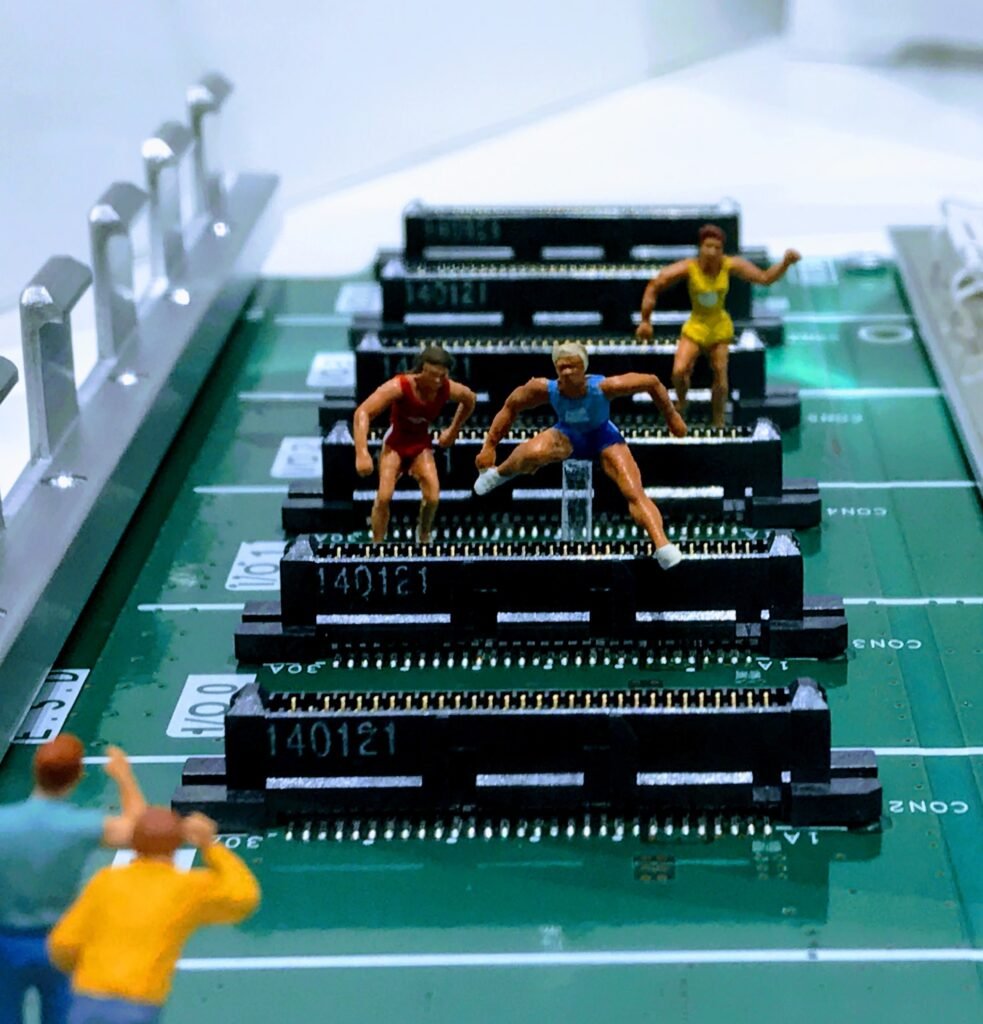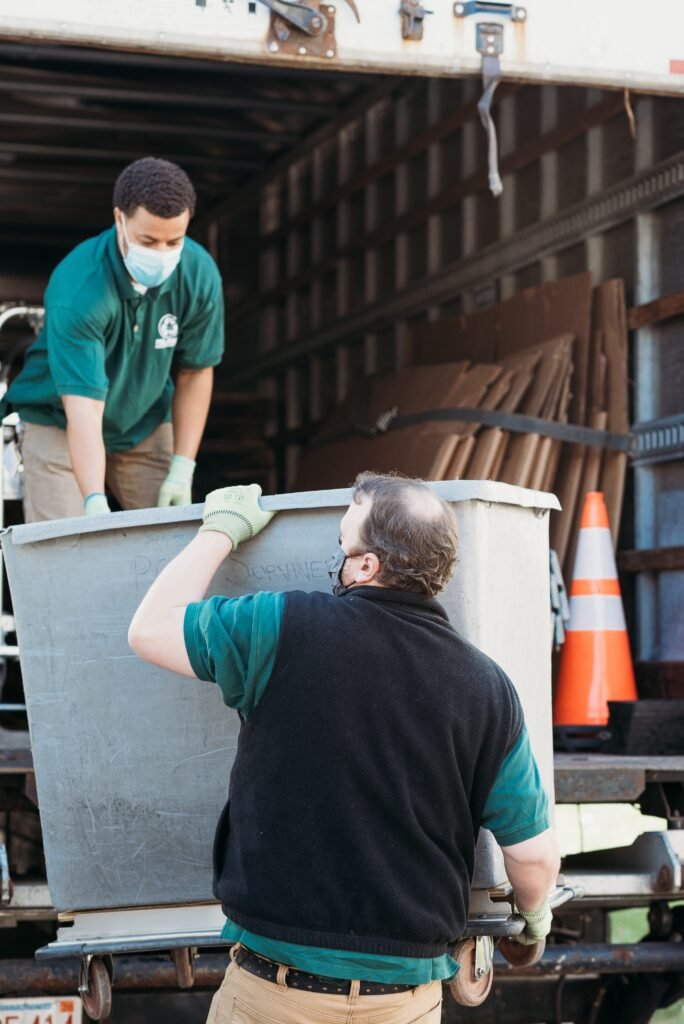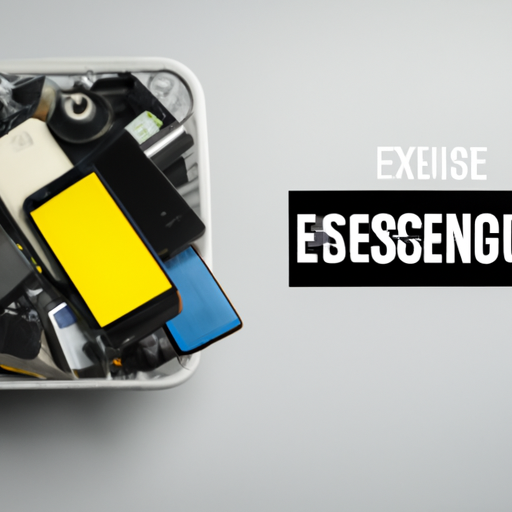In this article, we will explore the best methods for disposing of your old or broken gadgets. From smartphones to laptops, we will cover the proper way to get rid of these electronic items without harming the environment. You will learn about recycling programs, donation options, and even trade-in opportunities that can help you responsibly part ways with your gadgets. By the end of this article, you will have a clear understanding of how to safely dispose of your old electronics.
Why is proper disposal of old or broken gadgets important?
In today’s fast-paced world, the accumulation of old or broken gadgets is inevitable. Whether it’s a smartphone, laptop, or TV, technology continues to evolve, and we often find ourselves upgrading to the latest models. But what happens to our old devices once we’re done with them? Improper disposal of gadgets can have far-reaching consequences, both for the environment and our health. It is crucial to understand the importance of disposing of old or broken gadgets properly.
Environmental impact of improper disposal
When gadgets are not disposed of properly, they often end up in landfills where they take up valuable space and contribute to the growing problem of electronic waste, or e-waste. E-waste contains hazardous materials such as lead, mercury, and cadmium, which can contaminate soil and water sources, posing a significant threat to the environment.
Improper disposal of gadgets also leads to the release of greenhouse gases, contributing to climate change. The production of electronic devices requires the extraction of finite resources and the consumption of energy. By disposing of gadgets improperly, we exacerbate the demand for new devices, further depleting natural resources.
Health hazards associated with improper disposal
Apart from the environmental impact, improper disposal of gadgets can have severe health consequences. The hazardous materials present in electronic devices can leach into the soil and contaminate groundwater, affecting the quality of drinking water. This contamination poses health risks to both humans and animals.
When gadgets are incinerated or end up in illegal e-waste recycling facilities, toxic fumes are released into the air. These fumes contain harmful substances like dioxins and furans, which can lead to respiratory problems, skin irritation, and even cancer.
It is essential to prioritize the proper disposal of old or broken gadgets to minimize the environmental impact and safeguard our health. By adopting responsible disposal methods, we can contribute to a cleaner and safer environment while also promoting sustainability.
Understanding the different components of gadgets
Before diving into the proper disposal methods, it is crucial to understand the composition of gadgets. Each device consists of various components, including both hazardous materials and valuable resources. By identifying and separating these components, we can ensure that they are disposed of in an appropriate manner.
Identifying hazardous materials in gadgets
Gadgets often contain hazardous materials that can be harmful if not handled properly. Some of the most common hazardous substances found in electronic devices include:
- Lead: Found in solder, batteries, and printed circuit boards (PCBs). Lead can cause damage to the nervous system and can be particularly harmful to children and pregnant women.
- Mercury: Present in displays, switches, and batteries. Mercury can harm the brain, kidneys, and developing fetuses.
- Cadmium: Typically found in batteries and semiconductors. Cadmium is a known carcinogen and can cause respiratory issues.
- Brominated flame retardants (BFRs): Used in plastic casings and circuit boards. BFRs can leach into the environment and have detrimental effects on human health.
Discovering valuable components for recycling
On the flip side, gadgets also contain valuable components that can be recycled or repurposed. Precious metals such as gold, silver, and palladium can be extracted from circuit boards, while metals like aluminum and copper can be recycled for future use. By recovering these valuable resources, we reduce the need for energy-intensive mining and conserve finite resources.

Methods for proper disposal of gadgets
Now that we understand the importance of proper disposal and the different components of gadgets, let’s explore the various methods available for disposing of old or broken devices responsibly.
Donating gadgets to charities or organizations
If your old gadget is still in good working condition, consider donating it to a charity or organization that refurbishes electronics for those in need. Many nonprofit organizations accept used gadgets and distribute them to individuals or communities that may not have access to technology. This way, you extend the life of the device while helping bridge the digital divide.
Taking gadgets to authorized collection centers
Authorized collection centers are specifically designated for the recycling and disposal of electronic waste. These facilities have the necessary equipment and expertise to handle gadgets safely. By taking your old or broken device to an authorized collection center, you can ensure that it will be properly dismantled, recycled, or disposed of in accordance with environmental regulations.
Participating in gadget trade-in or buyback programs
Many electronics manufacturers and retailers offer trade-in or buyback programs. These programs allow you to exchange your old device for a discount on a new one or receive a monetary incentive. Often, the returned gadgets are refurbished and resold, reducing electronic waste and extending the lifespan of the gadgets.
Selling or exchanging gadgets through online platforms
Online platforms provide a convenient way to sell or exchange your old gadgets directly with other individuals. Websites and apps dedicated to buying and selling used electronics offer a marketplace for connecting buyers and sellers. By selling or exchanging your device, you not only give it a new home but also contribute to the circular economy by keeping valuable resources in circulation.
Preparing gadgets for disposal
Regardless of the disposal method you choose, it is essential to take a few preparatory steps to protect your privacy, minimize environmental impact, and ensure the safety of those handling the gadgets.
Backing up and removing personal data from gadgets
Before disposing of any gadget, it is crucial to back up your data to ensure it is not lost. Transfer any important files, photos, or documents to a computer, external hard drive, or cloud storage. After backing up your data, perform a factory reset or wipe the device to remove any personal information. This step is critical to protect your privacy and prevent unauthorized access to your data.
Removing batteries and other hazardous components
Batteries, especially lithium-ion batteries, are considered hazardous waste and should be handled with care. Remove the battery from your gadget before disposing of it. Place the battery in a designated battery recycling bin or take it to a battery recycling collection point. Additionally, if you are comfortable doing so, you can remove other hazardous components, such as PCBs, before recycling the device.
Cleaning and restoring gadgets if possible
If your device is still functional but needs some repairs, consider cleaning and restoring it before disposal. Removing dust and debris, replacing broken parts, or performing software updates can increase the device’s lifespan. If you have the skills or are willing to learn, you can find online tutorials and guides for repairing specific gadgets.

Recycling gadgets for a sustainable future
Recycling is an essential component of responsible gadget disposal. By recycling gadgets instead of sending them to landfill, we conserve resources, reduce pollution, and minimize the demand for new devices. Let’s explore the benefits of recycling gadgets and how to find certified recycling centers or programs.
Benefits of recycling gadgets
Recycling gadgets offers several benefits:
-
Resource conservation: Recycling gadgets allows for the extraction of valuable metals and materials, reducing the need for mining and conserving finite resources.
-
Pollution reduction: Proper recycling prevents hazardous materials from ending up in landfills or being incinerated, minimizing environmental contamination and air pollution.
-
Energy savings: Recycling gadgets requires less energy than manufacturing new ones. By recycling, we reduce greenhouse gas emissions associated with the production process.
Finding certified recycling centers or programs
When recycling gadgets, it is crucial to choose certified recycling centers or programs that adhere to rigorous environmental standards. Look for certifications like R2 (Responsible Recycling) or e-Stewards. These certifications ensure that the recycling process meets specific criteria, including proper handling of hazardous materials and the responsible management of electronic waste.
To find certified recycling centers near you, refer to the directories provided by environmental organizations, local municipalities, or electronic manufacturers. Many of these resources offer search functions that allow you to locate recycling facilities based on your location and the type of gadget you wish to recycle.
Understanding the recycling process for gadgets
When you bring your gadget to a certified recycling center, it undergoes a detailed recycling process:
-
Sorting: The gadgets are sorted into different categories based on their type and components. This separation allows for a more efficient recycling process.
-
Dismantling: The devices are then dismantled, and valuable components, such as circuit boards and metals, are extracted for recycling.
-
Material recovery: The extracted components undergo further processing to recover valuable materials like precious metals and plastics.
-
Hazardous waste disposal: Any hazardous materials, such as batteries or mercury-containing parts, are safely removed and disposed of in accordance with environmental regulations.
-
Responsible disposal: Once the recycling process is complete, the remaining materials are disposed of or repurposed appropriately, ensuring minimal environmental impact.
Repurposing gadgets creatively
While recycling is a sustainable option, another creative way to extend the life of your old gadgets is through repurposing. Repurpose your old gadgets using DIY projects or upcycling ideas.
DIY projects using old gadgets
Put your creativity to use by repurposing old gadgets into functional and decorative items. For example:
- Turn an old smartphone into a digital photo frame or a portable media player.
- Convert a laptop screen into an external monitor or use the keyboard to create a custom external input device.
- Transform an old tablet into a home automation controller or a recipe viewer in the kitchen.
By repurposing gadgets, you give them a new lease on life and minimize their impact on the environment.
Upcycling gadgets for new uses
Upcycling involves the transformation of old gadgets into entirely new products or items. Some innovative upcycling ideas include:
- Turning a broken digital camera into a quirky desk lamp.
- Creating a wall clock out of a vinyl record and an old smartphone’s screen.
- Using an obsolete computer tower as a unique planter for your favorite plants.
By upcycling gadgets, you can give them a new purpose and divert them from the waste stream.

Disposal options for specific types of gadgets
Different types of gadgets require specific disposal methods due to their composition and the presence of unique components. Let’s explore how to dispose of some commonly used gadgets responsibly.
Smartphones and tablets
Smartphones and tablets often contain precious metals, valuable plastics, and hazardous components like lithium-ion batteries. To properly dispose of smartphones and tablets:
- Follow the preparatory steps mentioned earlier, including backing up and wiping your data and removing the battery if possible.
- Donate or sell working devices.
- Take non-functional devices to authorized collection centers for recycling.
- Consider repurposing old smartphones or tablets as media players, security cameras, or remote controllers for smart home devices.
Computers and laptops
Computers and laptops are composed of various materials, including valuable metals and toxic substances. When disposing of computers and laptops:
- Back up and wipe your data, remove batteries, and consider restoring or repairing the device if possible.
- Donate or sell working devices.
- Take non-functional devices to authorized collection centers for recycling.
- Remove and separately recycle components like hard drives, RAM, and power supplies.
Printers and scanners
Printers and scanners contain electronic components, valuable metals, and potential hazardous materials. Proper disposal of printers and scanners involves:
- Donate or sell working devices, ensuring that the recipient will responsibly recycle the device when it reaches the end of its lifespأ،n.
- Take non-functional devices to authorized collection centers for recycling.
- Remove and recycle ink cartridges separately.
- Look for any potentially hazardous materials, such as batteries or mercury-containing parts, and handle them appropriately.
TVs and monitors
Old TVs and monitors often contain hazardous materials, including leaded glass and mercury. To dispose of TVs and monitors properly:
- Donate or sell working devices.
- Take non-functional devices to authorized collection centers for recycling.
- Consider repairing broken devices if financially viable.
- Look for recycling programs offered by electronic retailers or manufacturers specifically for TVs and monitors.
Adhering to legal and ethical guidelines
When disposing of gadgets, it is important to adhere to legal and ethical guidelines to ensure responsible e-waste management.
Complying with local e-waste disposal regulations
Different regions have their own regulations regarding the disposal of e-waste. Before disposing of your gadgets, familiarize yourself with the local laws and regulations. Many countries and municipalities have specific rules for the recycling and disposal of electronic devices. Complying with these regulations ensures that your gadgets are handled in an environmentally responsible manner.
Ensuring data privacy during disposal
Data privacy is a significant concern when disposing of electronic gadgets. Take steps to protect your personal information by backing up and wiping your data, as mentioned earlier, before disposing of any device. It is also advisable to remove or destroy any physical storage media, such as hard drives or memory cards, to prevent unauthorized access to your data.
Finding trusted disposal services
To ensure that your gadgets are handled responsibly, it is crucial to use trusted disposal services. Look for certifications or accreditations that guarantee proper handling and disposal of electronic waste. Research local recycling centers or programs to determine their legitimacy and commitment to environmental sustainability.

Educating others about proper e-waste disposal
Raising awareness about proper e-waste disposal is vital to encourage others to adopt responsible practices. Educating individuals, communities, and especially children about the importance of proper e-waste disposal is essential for a sustainable future.
Raising awareness in communities
Organize or participate in community events or awareness campaigns to educate people about the environmental and health impacts of improper e-waste disposal. Collaborate with local organizations, schools, and businesses to spread the message and provide resources on how to dispose of gadgets responsibly.
Teaching children about responsible gadget disposal
Children, the next generation of consumers, can play a crucial role in shaping a sustainable future. Introduce them to concepts of recycling and responsible consumption at an early age. Teach them about the valuable components in gadgets and the environmental impact of e-waste. Encourage them to be mindful of their gadget usage and to recycle or donate their old devices.
Conclusion
Now that you understand the importance of proper disposal of old or broken gadgets, it is time to take responsibility for your electronic waste. By prioritizing responsible disposal methods, you contribute to a cleaner and safer environment, minimize the release of hazardous materials, and conserve valuable resources. From donating functional gadgets to authorized collection centers to repurposing or recycling broken devices, each action has a positive impact.
Remember to back up and remove personal data, separate hazardous components, and explore recycling or repurposing options for your gadgets. Be sure to adhere to legal and ethical guidelines, educate others about proper e-waste disposal, and foster a culture of responsibility in gadget usage. By collectively taking these steps, we can contribute to a sustainable future and create a cleaner, safer, and more environmentally friendly world.

